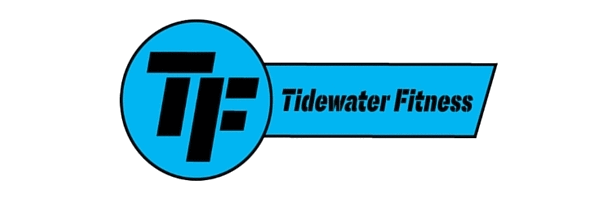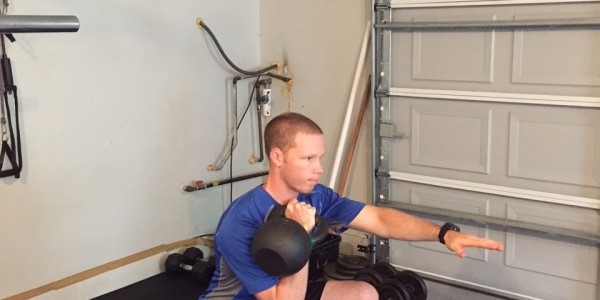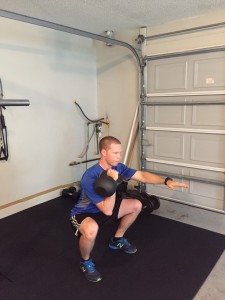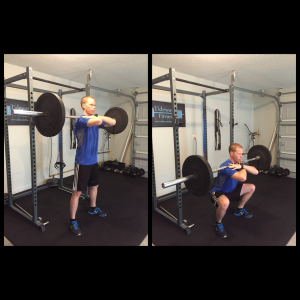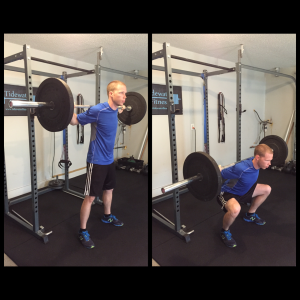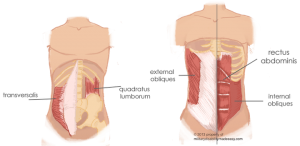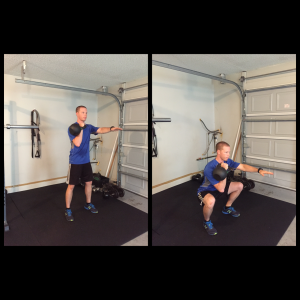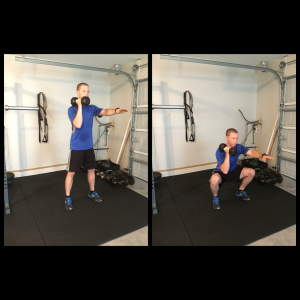When you walk into most gyms, you’ll be hard pressed to find many people doing squats. It’s unfortunate because this exercise works a lot of different muscle groups in the body including the quadriceps, hamstrings, glutes, calves, and abs.
Squats are also one of the most functional exercises there is. Think about it. We do it everyday when we sit down in a chair and get back up. Another great feature of the squat is it’s ability to progressed and regressed with ease. Almost everyone can do some sort of squat variation.
With that in mind, I want to highlight a great variation for you to add into your training programs. It’s called the 1 Arm Kettlebell Front Squat.
The difference between a front squat and back squat is the placement of the weight. In a front squat, the weight is on the front side of the body, and as you may have guessed, the weight is on the back side of the body in a back squat.
There are a few biomechanical differences between the front and back squat. There is more shearing force at the low back while performing a back squat. The reason being you have to lean forward to keep the bar positioned correctly during the entire exercise. This can place more pressure on the lumbar discs.
In the front squat, you have to keep your torso upright. If you lean forward, you will fall over. Because of this upright posture, there is more compression force on the back. Most people tolerate compression better than shearing.

Both versions of the squat tend to produce low shearing force on the knee. However, the front squat produces the least amount of compression force making them a good choice for people with meniscus tears or arthritis.
One of the biggest benefits you get when performing the squat is large amount of calories burned. Since it uses multiple muscle groups across many different joints you expend more energy than an exercise using one muscle group, like a biceps curl. If your goal is weight loss or fat loss, the squat should be a staple in your program.
What makes the 1 arm kettlebell front squat so effective is its offset load. Anytime you have a weight on one side of the body, the other side has to work harder to prevent you from falling over. In this variation, the obilques and quadratus lumborum, on the opposite side of the kettlebell, are preventing lateral flexion (side bending). So not only is this a great lower body exercise, it’s a fantastic core exercise as well.
How to do it:
1) Begin by grabbing one kettlebell and placing the bell on top of the forearm. Pull the arm in tight against the chest.
2) From there push the hips back and begin lowering your body as if you were sitting down in a chair.
3) Squat between your legs while maintaining a flat back, upright torso, and braced abs.
4) Push through your heels and return to the starting position.
A dumbbell can be used if you do not have access to a kettlebell. Simply, hold the dumbbell slightly above the shoulder with the elbow pointing down and squat.
The 1 arm kettlebell front squat is a big bang for your buck exercise. Place it in the middle or end of your workout. A good starting point is 3 sets of 6-8 reps on each side. Give it a try and let me know what you think!
Photo credit:
1. http://www.brianmac.co.uk/kneeinj.htm
2. http://www.militarydisabilitymadeeasy.com/torsoandneckmuscles.html
